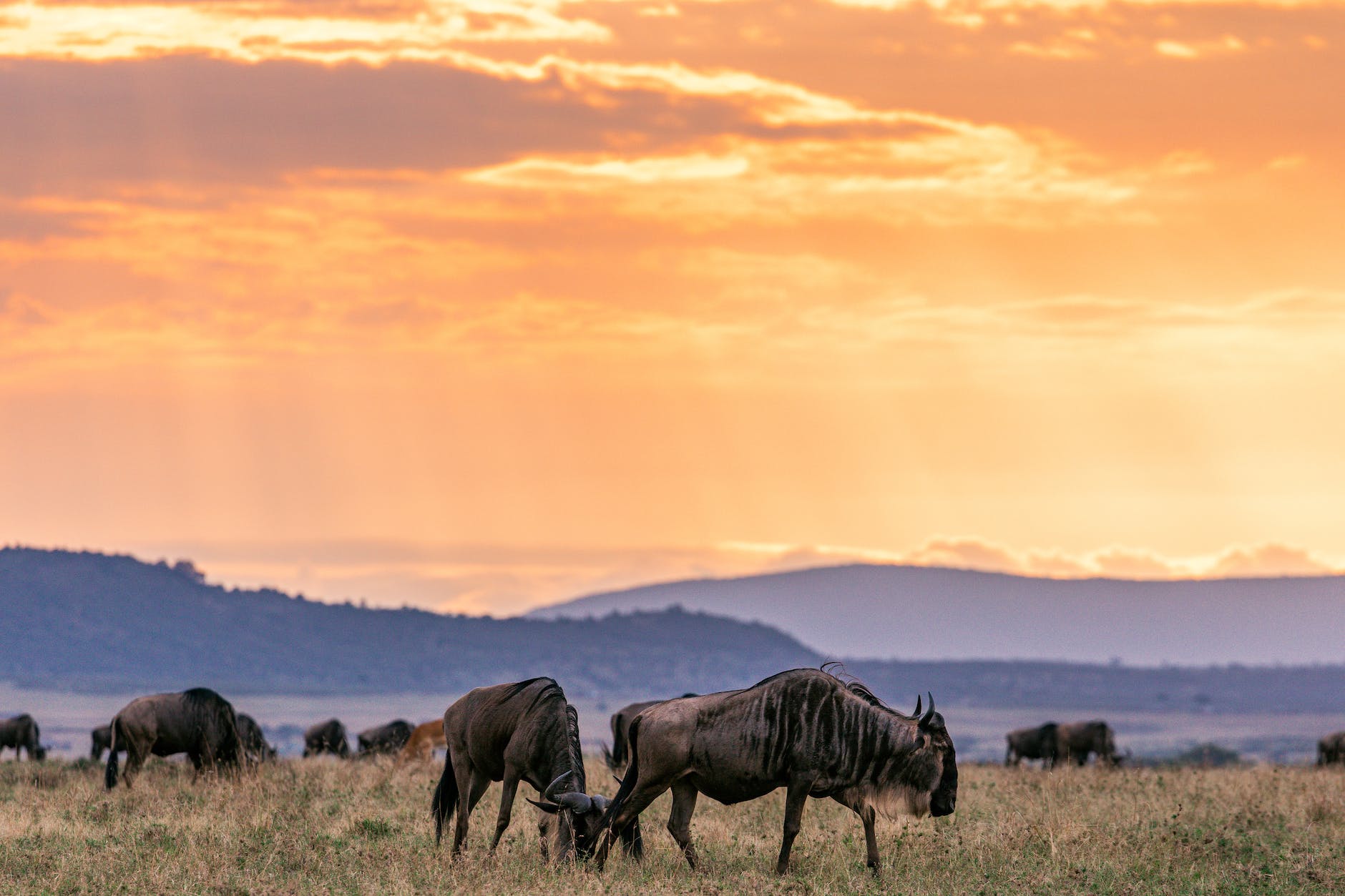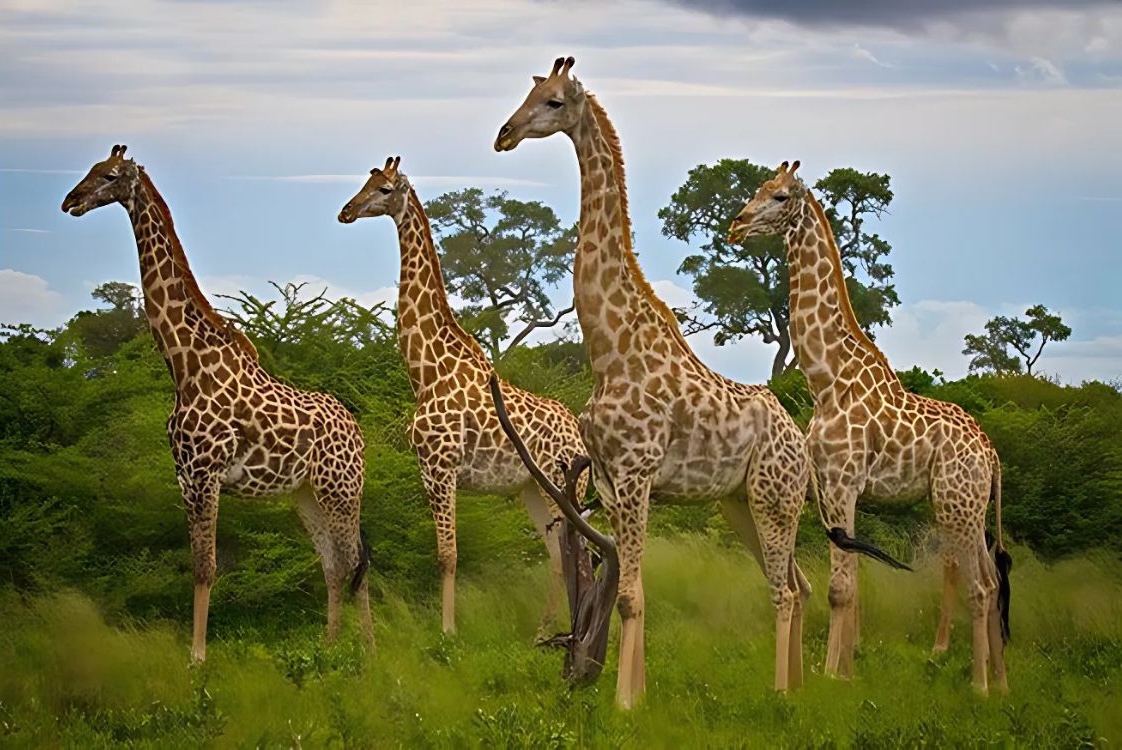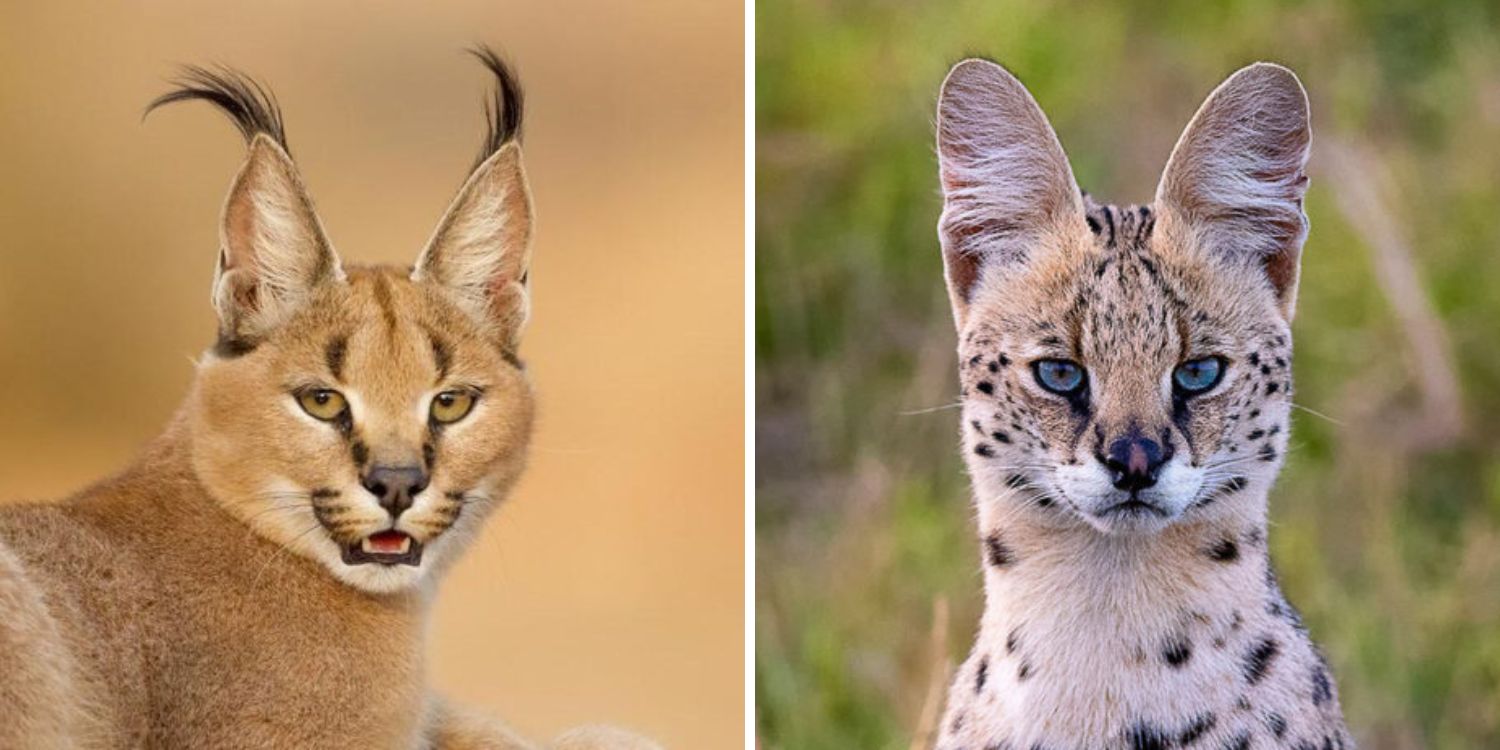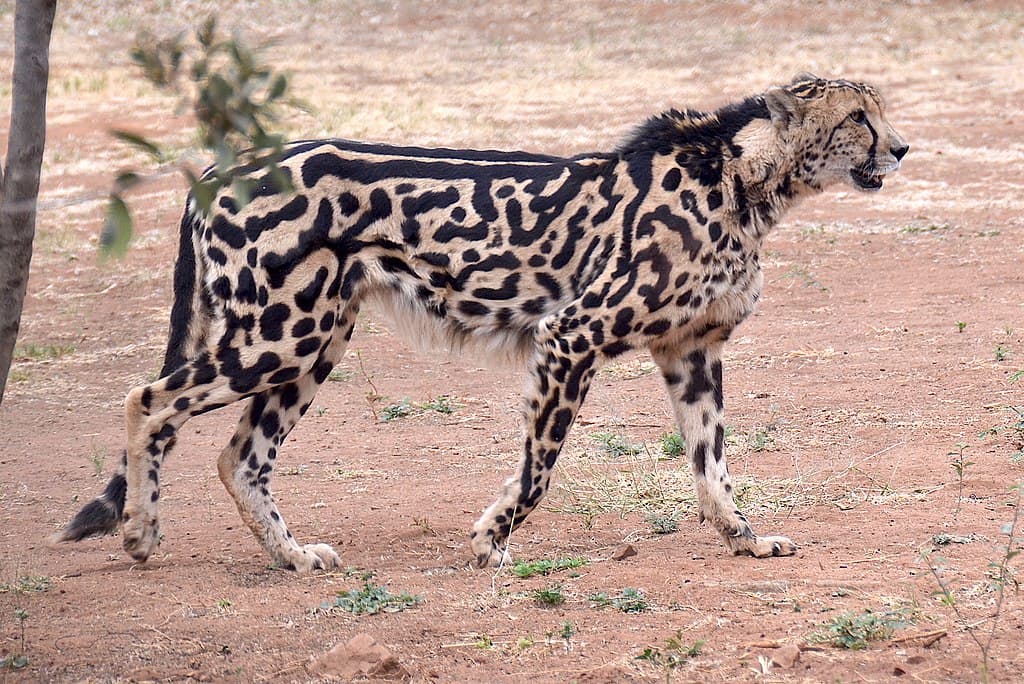
The Great Migration is one of nature’s most spectacular events, a mesmerizing display of movement and resilience. It’s a journey that spans thousands of kilometers, driven by the ever-changing rhythm of rain and green pastures. Here’s the lowdown:
The Players:
- Black wildebeests: Found in southern Africa, with around 18,000 individuals participating in the Great Migration.
- Blue wildebeests: Eastern and southern Africa’s dominant species, with over 1.5 million individuals on the move.
- Zebras: Around 300,000 zebras travel alongside the wildebeest as part of the Great Migration.
- Thomson’s gazelle: Sometimes referred to as a “tommie.” Around 500,000 take part in the Great Migration. They’re fantastic runners, and can exceed 65 km per hour.
- Eland: Around 18,000 elands take part in the Great Migration. Eland are the largest antelope and they can be very shy.
- In addition to the migrating wildebeest, zebra, tommies, and eland, there are more than 35 species of plains animals that participate to some degree. Add some 3,000 lions and great numbers of spotted hyenas, leopards, hippopotamuses, giraffes, cheetahs, and baboons. Birds, reptiles, and insects are found in addition to the mammals. Rare and seldom sighted animals include African wild dog, African wild cat, rhino, bat eared foxes, caracal, serval, pangolin, and even snakes. More than 350 species of birds, including ostriches, vultures, and flamingos, have been recorded. And, of course the crocodiles that inhabit marshes and water sources near the Mara River are also involved even if they don’t travel alongside the Great Migration.
The Journey:
- Starting point: Varies depending on species. Black wildebeests begin in South Africa’s Kruger National Park, while blue wildebeests start in Tanzania’s Serengeti National Park.
- The circuit: Both species follow a clockwise loop, traversing savannas, plains, and even crossing the treacherous Mara River.
- Distance: Black wildebeests cover around 1,000 kilometers, while blue wildebeests embark on a staggering 3,000 kilometers!
- Timing: Driven by the rains, the migration typically starts in May or June and lasts until November or December.
Highlights:
- Calving season: The Serengeti transforms into a nursery as millions of calves are born within a few weeks, creating a vulnerable yet awe-inspiring spectacle.
- River crossings: Witnessing the gnus plunge into the Mara River, braving crocodiles and churning currents, is a heart-stopping experience.
- Predatory encounters: Lions, hyenas, and cheetahs see the migration as a feast, creating dramatic moments of survival and struggle.
Why they do it:
- Food: Following the rains ensures fresh grazing lands, essential for survival, especially during the dry season.
- Water: Finding reliable water sources is crucial, driving them towards rivers and watering holes.
- Instinct: This complex behavior is deeply ingrained, passed down through generations, ensuring the survival of the species.
A spectacle at risk:
Habitat loss, poaching, and climate change threaten this natural wonder. Conservation efforts are crucial to ensuring future generations can witness this awe-inspiring display of nature’s power and resilience.

Want to learn more? Here at AnimalPages, we’re pretty fond of these critters, so we’ve got additional FAQs for gnus and their migration. Then you can explore documentaries, travel blogs, or even consider planning a trip to witness this incredible phenomenon firsthand!








